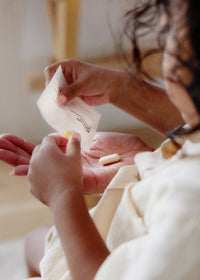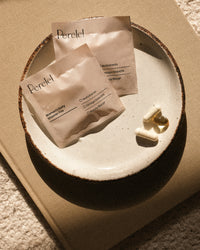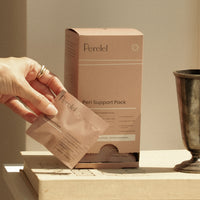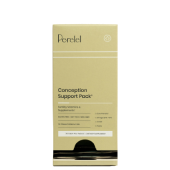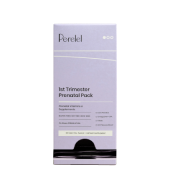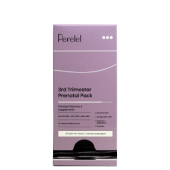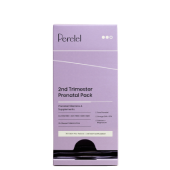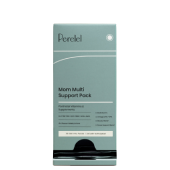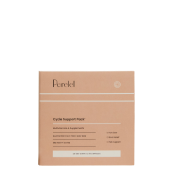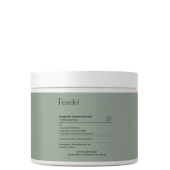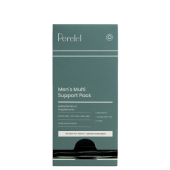Body literacy is an important pillar in the Perelel universe, where every woman feels equipped and supported throughout each hormonal lifestage. One place to reacquaint ourselves with this sense of deep body connection and empowerment is menarche, the four phases of your cycle, and understanding your fertility window.
A lot of the misinformation about the fertile window stems from sex ed class, where many of us are fearmongered into believing we can get pregnant any day of any month. However, in a typical 28-day cycle, there are only six days that constitute your fertile window and your ovulation. Understanding our body cues and identifying ovulation through Fertility Awareness Methods or FAMs, can be used to both try to get pregnant or avoid pregnancy.
Below, find a quick cheatsheet on what FAMs are, why they’re a valuable tool in your body literacy toolkit, and the various methods for tracking your cycle and natural family planning.
What are the different methods to gain fertility awareness?
Most use temperature tracking or cervical mucus (or both) to predict ovulation and your fertile window. With temperature tracking, there are under-the-tongue basal temperature thermometers that you can administer as soon as you wake up, from bed. Through wearable technology, innovations allow you to monitor your basal temperature overnight as you sleep. When ovulating, your basal temperature will be slightly raised. While observing your cervical mucus, notice at ovulation how discharge will evolve from pasty and creamy to being watery, slippery, and stretchy, resembling egg whites. You’ll see more cervical mucus right before ovulation and an elevated basal body temperature just after ovulation, which continues until just before your period.
Beyond changes in discharge and cervical mucus, some women also notice symptoms like breast tenderness, dull cramping, and increased sex drive during their fertile days.
Another method includes at-home ovulation kits. Also known as ovulation predictor kits or fertility monitors, this method tests urine for the presence of luteinizing hormone (LH), a hormone that surges a day or two before ovulation. “A fertility monitor may be helpful for some, but may also cause increased anxiety for others,” says Dr. Banafsheh Bayati, MD, OB/GYN, FACOG and Perelel medical co-founder.
A reminder, though—these tests may also be unreliable or misleading for some women. For example, women with polycystic ovary syndrome (PCOS) typically have elevated LH levels.
Ultimately, knowing when you’ve ovulated can also help you predict when you’ll get your period.
Shop the Article:
How do these tracking methods work?
If you want to get pregnant, identify the six days when you’re ovulating and try for sex. If you want to avoid pregnancy, you can either avoid sex or use a backup method of birth control.
Attuning to your cycle and when you are ovulating could be right for you if you want a birth control option that:
-
Is non-hormonal
-
Doesn’t have side effects
-
Can be low cost
-
Doesn’t require a doctor’s visit
Is tracking my cycle an effective form of birth control?
FAMs are 77 to 98 percent effective. It all depends on your consistency and whether you’re combining methods.
Keep in mind: During your fertile window, FAMs are only as effective at preventing pregnancy as the backup method that you’re using (i.e. a condom).
“It can take up to six months of tracking to really understand your cycle and its phases, so plan early and educate yourself,” Dr. Bayati says. “It is important to note that cycles can also fluctuate based on many factors, so patience is key.”
For further reading on how to make the most of your fertile window if you’re TTC, click here.
References:
What is the Temperature Method? | Basal Body Temperature. (n.d.). Planned Parenthood. https://www.plannedparenthood.org/learn/birth-control/fertility-awareness/whats-temperature-method-fams
Briden, L. (2022, March 25). The 5 Best Types of Natural or Non-Hormonal Birth Control. Lara Briden - the Period Revolutionary. https://www.larabriden.com/quick-survey-5-best-types-of-natural-birth-control/
Cervical Mucus. Cleveland Clinic. https://my.clevelandclinic.org/health/body/21957-cervical-mucus
Trying to get pregnant? Here’s when to have sex. ACOG.










